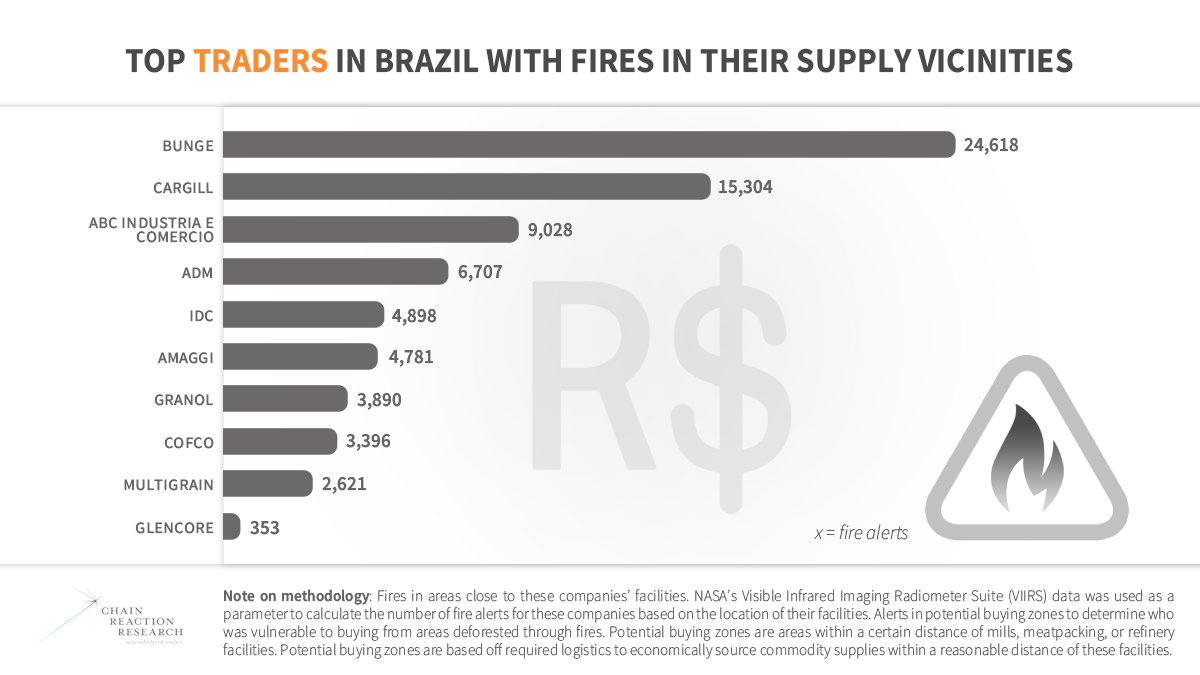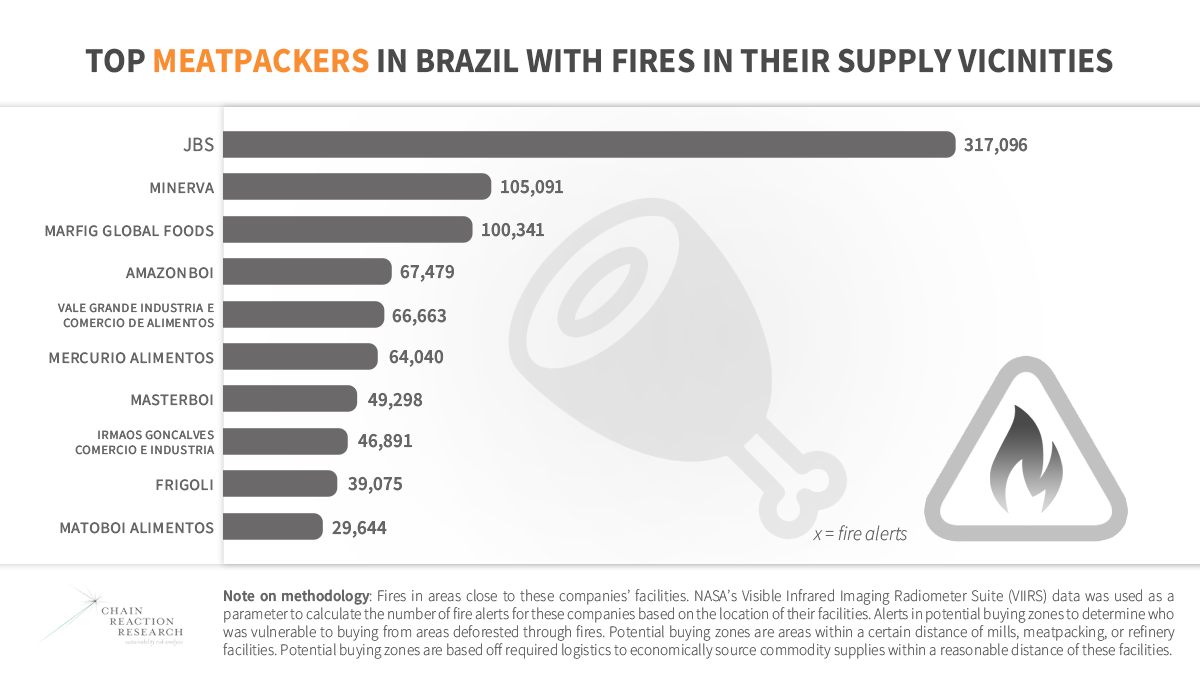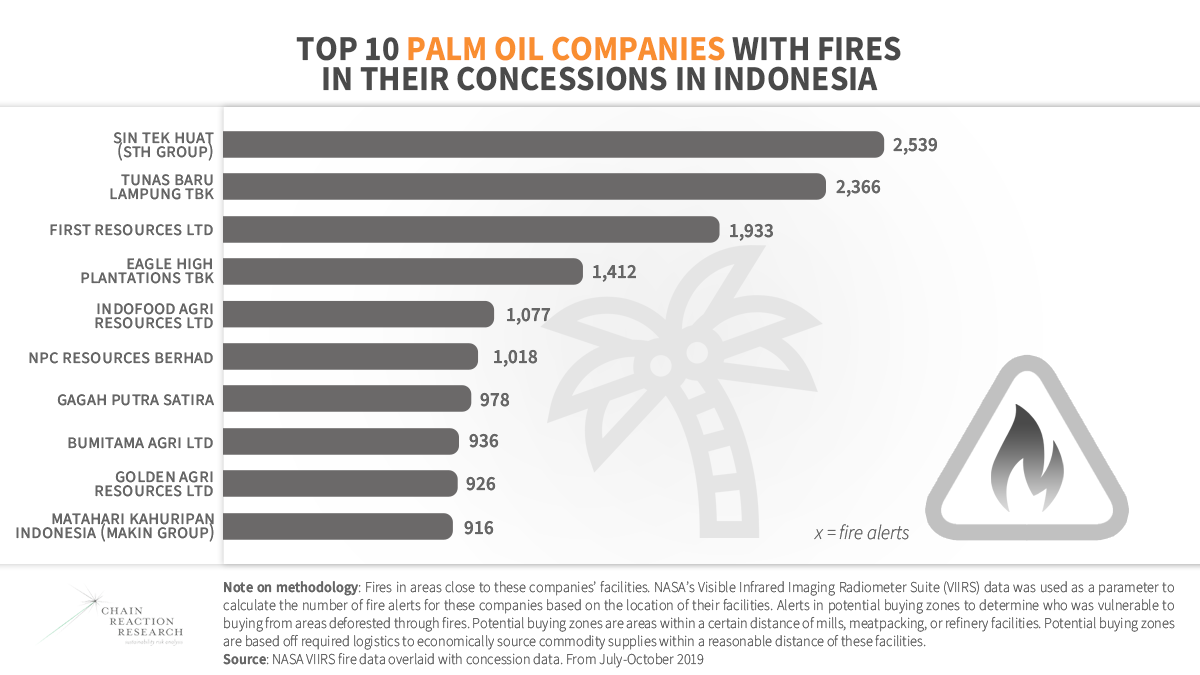Clearing land for soy plantations and cattle ranching are a major cause of fires in Brazil.
The Amazon rainforest and the Cerrado grasslands are highly biodiverse ecosystems and huge carbon sinks. But these forests are being cleared at an alarming rate for soy and cattle farming. The increase in deforestation and fires, mostly illegal, has reduced the vegetation cover of the Cerrado to less than 50% of its original territory. The region now has the largest area of agricultural land and livestock in Brazil.
Brazil is the largest exporter of both beef and soybeans. China, the largest buyer of Brazillian soy, imports 48% of soy produced in the northern Cerrado region of Matopiba, while its second-largest importer, the EU, accounts for 17%. The situation is less extreme with beef, with roughly three-quarters of production consumed domestically. Nevertheless, the rest is shipped in sufficient quantities to make Brazil the largest exporter of beef globally. 2020 even saw record beef exports, growing 8% from 2019, despite the COVID-19 pandemic.
Large companies are also associated with the increasing number of fires. Soy traders Bunge and Cargill, for instance, together had more fires in their vicinities than all the other major soy traders combined. Among slaughterhouses, JBS, Marfrig and Minerva accounted for 60% of fires in the potential buying zones of the top ten companies.
In August 2019, Brazil suffered one of the worst fire seasons, with more than 30 million hectares of Brazilian land burned. This represents 3.7% of Brazil’s landmass. The subsequent 2020 fire season was actually more severe, increasing nearly 13% from 2019. In Brazilian Amazon, fires were up by nearly 16% and deforestation wiped out an area larger than Jamaica in the year to August 2020.
The Pantanal – the world’s largest wetland that stretches from Brazil into Bolivia and Paraguay – had an increase of more than 120% in fires in 2020. Nearly a quarter of the Brazilian Pantanal was devastated, amid the worst drought in nearly half a century. Overall, the number of fires that occurred were nearly three times higher than 2018 and the highest since 2010. For those fires that occurred in forested areas, research indicates a link to deforestation and criminal activities on private properties.
In 2021, Brazil is on course for yet another intense fire season, with a 13-year high for the number of fire alerts recorded for June.
The significant increase in deforestation and forest fires since 2019 came after President Jair Bolsonaro took office, following a campaign backed by agribusiness and farmers who wanted a weakening of environmental laws. Since then, Brazil’s environmental agencies under Bolsonaro have been subjected to nearly 600 administrative and rules changes. Budget for environmental monitoring and firefighting was reduced by 9.8% in 2020, then by another 27.4% in 2021, making it impossible for environmental agencies to carry out their work effectively. Fines imposed for illegal deforestation also fell by 42%. Overall, this environmental deregulation is encouraging the slash and burn of forests, with deforestation soaring by 34% since 2019.
Pressure from companies and investors is mounting to stop fires and deforestation in Brazil. In 2019, Nestlé stopped sourcing Brazilian soy from Cargill, while fashion brand H&M and shoemakers VF Corp announced they would no longer source Brazilian leather. In 2020, institutional investors managing a combined total of USD 3.7 trillion in assets, called on the Brazilian government to halt deforestation and rein in deregulation of environmental protection policies. In 2021, investors, UK supermarkets and food groups joined forces to criticise a proposed bill that could “enable faster destruction of the Amazon” in Brazil. But the Brazilian government appears to still back the interests of agribusiness. Though strong national and international pressure stopped a law allowing operations on Inddigenous land from passing in 2020,in 2021 a new bill to limit recognition of reservation lands backed by the country’s farm sector is being voted on.



